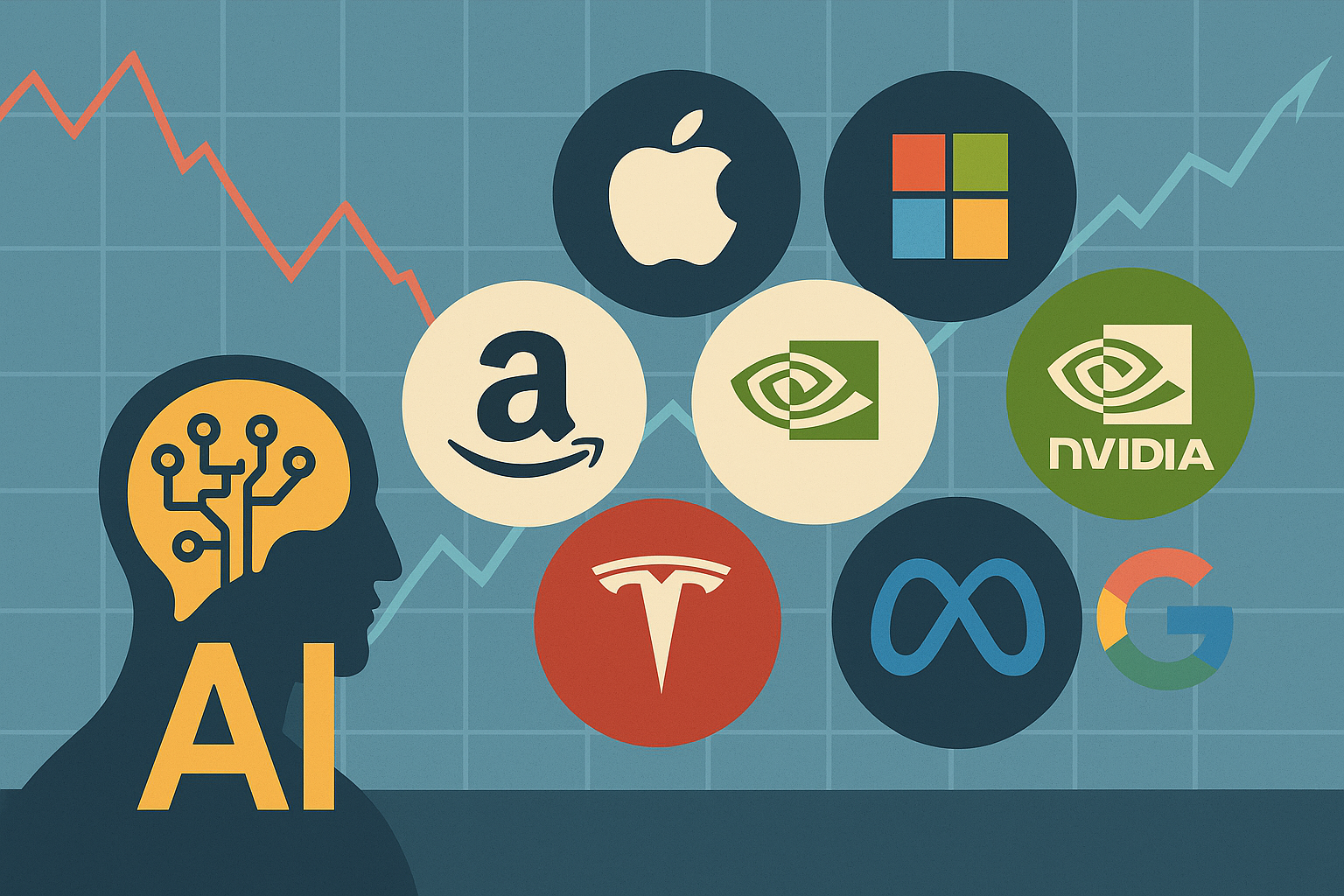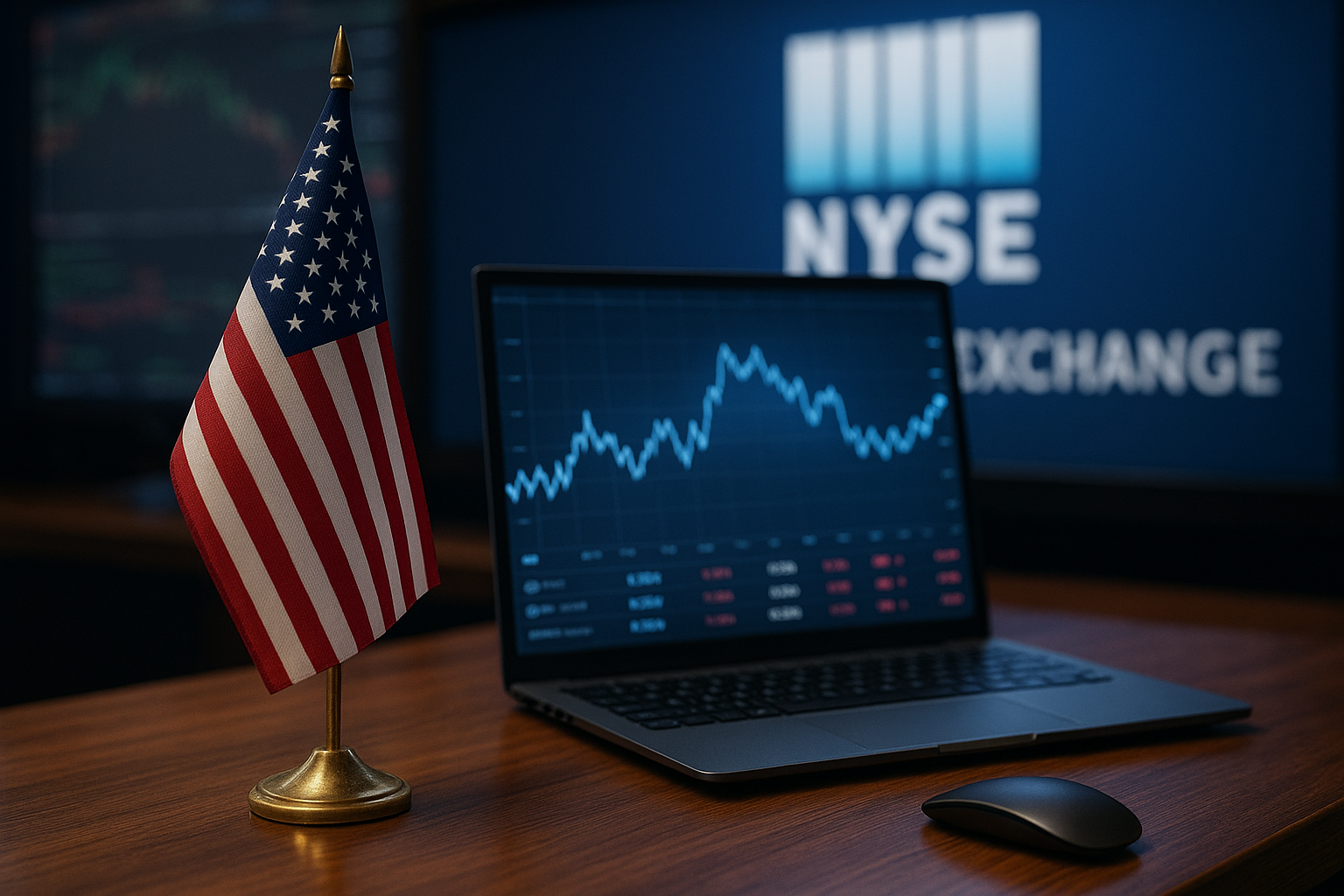The high-flying tech giants known as the “Magnificent Seven”—Apple, Microsoft, Nvidia, Amazon, Alphabet, Meta, and Tesla—have dominated the market narrative for nearly two years, thanks to outsized gains driven by artificial intelligence (AI), cloud infrastructure, and consumer platform dominance. But with valuations stretched and growth moderating, analysts are beginning to question whether this elite cohort can continue to outperform—or if it’s time for investors to rotate into the next wave of tech winners.
Even as AI remains a generational growth engine, Wall Street is signaling a shift. While the Magnificent Seven still boast solid fundamentals and remain long-term portfolio anchors, earnings growth forecasts are softening, and relative performance is beginning to flatten. The opportunity may now lie in AI-adjacent innovators and cybersecurity enablers—smaller firms leveraging the same themes, but trading at more attractive multiples.
AI Hype Meets Valuation Gravity
According to a recent analysis from Bloomberg and Goldman Sachs, the Magnificent Seven collectively now account for nearly 30% of the S&P 500’s total market capitalization. Nvidia alone, which soared past a $4 trillion valuation in July 2025, has delivered over 160% year-to-date gains, fueled by surging demand for AI chips and data center infrastructure.
Yet despite headline-grabbing performances, earnings expectations are no longer accelerating at the same pace. Analysts at Morgan Stanley note that consensus 2025 earnings per share (EPS) growth for the group is slowing to the high single digits, down from double-digit projections earlier in the year.
Meta and Tesla, for instance, are now facing margin pressure from capex-heavy AI investments and softer advertising demand, respectively. Meanwhile, Apple and Microsoft—though stable—are being priced for perfection, trading at forward P/E multiples of 30x and above.
“AI remains a durable theme, but leadership may rotate,” says Sarah Klein, senior tech analyst at Bernstein Research. “The next phase will reward operational leverage, not just vision.”
Why This Matters for Investors
The tech sector remains a foundational allocation for most portfolios, but the risk/reward calculus is evolving. Overconcentration in megacap names may limit upside if growth expectations are already priced in.
Consider this: the equal-weighted S&P 500 has lagged the cap-weighted index by over 8% YTD. This suggests performance has been narrowly driven, with much of the index still catching up. If rate cuts materialize in late 2025, broader participation could lift undervalued tech segments faster than their already-priced peers.
Additionally, institutional rotation is already underway, with fund managers reallocating to mid-cap and small-cap tech—particularly companies offering AI software integration, cloud automation, and enterprise cybersecurity.
Future Trends to Watch
- AI Monetization Will Shift to Services
The next stage of AI growth will be less about GPU sales and more about enterprise integration. Watch for companies like Snowflake (SNOW), Palantir (PLTR), and Datadog (DDOG) as they commercialize real-world AI use cases. - Cybersecurity as an AI Hedge
With AI scaling rapidly, so do the risks. Firms like CrowdStrike (CRWD) and SentinelOne (S) are gaining institutional traction as cyberattack protection becomes mission-critical for AI infrastructure. - Global Expansion and AI Regulation
Regulatory tightening in the EU and rising protectionism in Asia could introduce friction for Big Tech. Companies with flexible, compliance-friendly models may be better positioned globally. - Decentralized AI and Open-Source Models
As LLM technology becomes more democratized, open-source platforms like Hugging Face or startups aligned with federated learning could attract venture and institutional capital.
Key Investment Insight
Maintain strategic exposure to core Magnificent Seven holdings, but reduce overweight allocations where valuation risk is elevated. At the same time, diversify into underappreciated enablers of AI and digital security—especially those with recurring revenue, scalable SaaS models, or direct ties to enterprise AI deployment.
For retail investors, look into tech ETFs that include small- and mid-cap exposure, such as the iShares Expanded Tech-Software Sector ETF (IGV) or the Global X Cybersecurity ETF (BUG).
For long-term alpha, focus on firms with high ARR (annual recurring revenue), healthy free cash flow, and niche defensibility in cloud operations, developer platforms, or edge computing.
As the AI narrative matures, the baton may pass from the architects to the builders—the infrastructure-layer innovators and niche software disruptors powering the next wave of digital transformation.
Stay ahead of the curve with expert insights, only at MoneyNews.Today—your source for smart investing in tomorrow’s technology.





